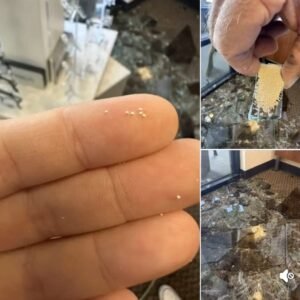Step-by-Step Guide to Using Ear Observation for Health Monitoring
Prepare Your Environment
Find a quiet, well-lit space with a mirror.
Clean your ears gently with a warm, damp cloth to remove surface dirt or earwax.
Observe the Appearance of Your Ears
Use a hand mirror or a smartphone camera to closely examine your ears.
Check for discoloration, swelling, rashes, or unusual textures.
Compare both ears; asymmetry might indicate a localized issue.
Assess Ear Sensitivity
Gently press and massage different parts of the ear, such as the earlobe, helix, and tragus.
Note any pain, tenderness, or unusual sensations.
Understand the Ear Map
Familiarize yourself with the ear reflexology chart, which connects ear points to body systems:
Lobes: Head and brain
Upper ear: Shoulders and arms
Middle ear: Digestive system and internal organs
Inner ear: Spine and back
Pay attention to corresponding areas if you notice pain or changes in the ear.
Perform Regular Ear Massage
Use your fingers to gently massage the outer ear, moving from the lobe upward.
Apply light pressure to specific points for 1-2 minutes daily.
This practice can stimulate circulation and potentially alleviate stress or discomfort in connected body areas.
Monitor Changes Over Time
Keep a journal of your observations, noting any recurring issues or new developments.
Compare your findings to your overall health, paying attention to any correlations.
Buy vitamins and supplements
Seek Professional Guidance
Consult an auriculotherapist or a healthcare professional for a deeper analysis if you suspect a health issue.
They can use specialized tools, like ear acupuncture needles or diagnostic equipment, to provide insights and treatment.
Step-by-Step Guide to Using Ear Observation for Health Monitoring
Prepare Your Environment
Find a quiet, well-lit space with a mirror.
Clean your ears gently with a warm, damp cloth to remove surface dirt or earwax.
Observe the Appearance of Your Ears
Use a hand mirror or a smartphone camera to closely examine your ears.
Check for discoloration, swelling, rashes, or unusual textures.
Compare both ears; asymmetry might indicate a localized issue.
Assess Ear Sensitivity
Gently press and massage different parts of the ear, such as the earlobe, helix, and tragus.
Note any pain, tenderness, or unusual sensations.
Understand the Ear Map
Familiarize yourself with the ear reflexology chart, which connects ear points to body systems:
Lobes: Head and brain
Upper ear: Shoulders and arms
Middle ear: Digestive system and internal organs
Inner ear: Spine and back
Pay attention to corresponding areas if you notice pain or changes in the ear.
Perform Regular Ear Massage
Use your fingers to gently massage the outer ear, moving from the lobe upward.
Apply light pressure to specific points for 1-2 minutes daily.
This practice can stimulate circulation and potentially alleviate stress or discomfort in connected body areas.
Monitor Changes Over Time
Keep a journal of your observations, noting any recurring issues or new developments.
Compare your findings to your overall health, paying attention to any correlations.
Buy vitamins and supplements
Seek Professional Guidance
Consult an auriculotherapist or a healthcare professional for a deeper analysis if you suspect a health issue.
They can use specialized tools, like ear acupuncture needles or diagnostic equipment, to provide insights and treatment.
Step-by-Step Guide to Using Ear Observation for Health Monitoring
Prepare Your Environment
Find a quiet, well-lit space with a mirror.
Clean your ears gently with a warm, damp cloth to remove surface dirt or earwax.
Observe the Appearance of Your Ears
Use a hand mirror or a smartphone camera to closely examine your ears.
Check for discoloration, swelling, rashes, or unusual textures.
Compare both ears; asymmetry might indicate a localized issue.
Assess Ear Sensitivity
Gently press and massage different parts of the ear, such as the earlobe, helix, and tragus.
Note any pain, tenderness, or unusual sensations.
Understand the Ear Map
Familiarize yourself with the ear reflexology chart, which connects ear points to body systems:
Lobes: Head and brain
Upper ear: Shoulders and arms
Middle ear: Digestive system and internal organs
Inner ear: Spine and back
Pay attention to corresponding areas if you notice pain or changes in the ear.
Perform Regular Ear Massage
Use your fingers to gently massage the outer ear, moving from the lobe upward.
Apply light pressure to specific points for 1-2 minutes daily.
This practice can stimulate circulation and potentially alleviate stress or discomfort in connected body areas.
Monitor Changes Over Time
Keep a journal of your observations, noting any recurring issues or new developments.
Compare your findings to your overall health, paying attention to any correlations.
Buy vitamins and supplements
Seek Professional Guidance
Consult an auriculotherapist or a healthcare professional for a deeper analysis if you suspect a health issue.
They can use specialized tools, like ear acupuncture needles or diagnostic equipment, to provide insights and treatment.







